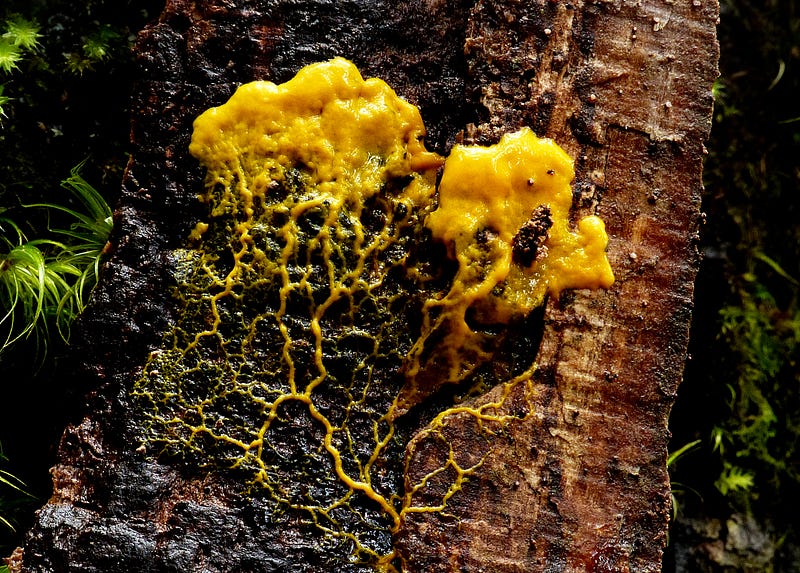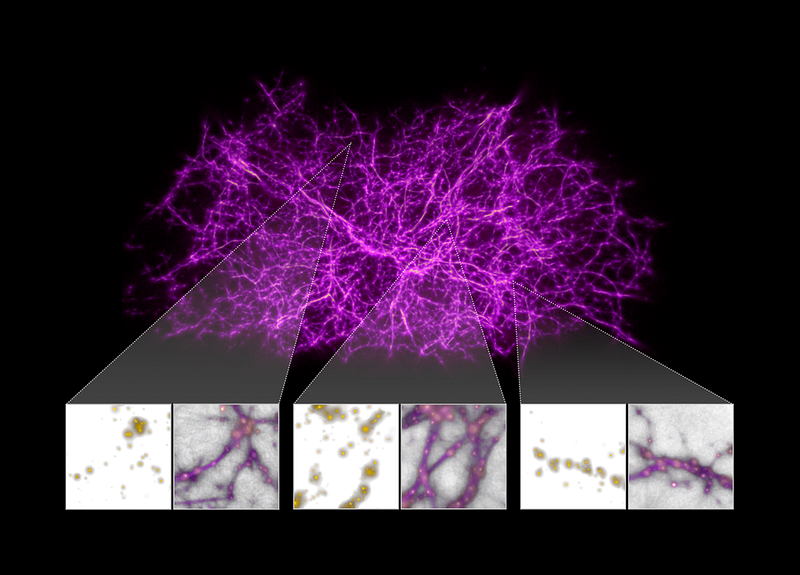The Astonishing Intelligence of Slime Moulds: Problem-Solvers Without Brains
Written on
Chapter 1: The Unlikely Genius of Physarum Polycephalum
The slime mould, known scientifically as Physarum polycephalum, is an intriguing organism that can often be found in gardens or forests. This unassuming creature is characterized by its vibrant colors but lacks eyes, a mouth, nerve cells, or a brain. Essentially, it is a single, massive cell containing multiple nuclei. But why should we take notice of these yellowish patches of slime that flourish on decaying wood?
Despite their seemingly simplistic form, slime moulds exhibit remarkable intelligence and decision-making skills, allowing them to tackle intricate challenges. While pets like Fido may learn basic commands, these organisms can navigate complex mazes in a matter of hours—outperforming some of us in cognitive tasks!

If you're looking to design an efficient subway system in a new city, you could simulate the population density using food sources and set up barriers with salt. Just place the slime mould in the center and watch it work its magic. Remarkably, this organism managed to replicate the Tokyo subway system in the same time it takes to binge-watch a few episodes of a popular series.
Chapter 2: The Mechanics of Slime Mould Intelligence
As the slime mould encounters a new habitat, it begins to gather data about its surroundings. By utilizing chemical signals, it detects food and obstacles. This process, known as chemotaxis, enables it to extend its filaments in search of nourishment. Through rhythmic contractions and relaxations, coordinated by internal calcium waves, it navigates its environment—all without a brain or conscious thought.
Do you think slime moulds display intelligence? These fascinating organisms challenge our human-centric notions of cognition. They are capable of performing functions typically associated with animals possessing brains, such as:
- Retaining some form of spatial memory, allowing them to solve mazes more quickly on subsequent attempts.
- Communicating intricate information with fellow slime moulds.
- Utilizing tools to manipulate and explore their surroundings.
For instance, slime moulds show evidence of spatial memory by navigating mazes more efficiently when they encounter them a second time. Additionally, while these creatures typically avoid salt, they can adapt to tolerate it over time, indicating a form of learning akin to habituation seen in humans.
Even scientists are beginning to harness the potential of slime moulds! Their ability to construct intricate networks to locate food has led physicists to explore whether they can model the filament-like structures that connect galaxies, simulating the vast networks of the universe.

Slime moulds challenge our preconceptions about intelligence. Although they lack consciousness, they think, remember, and even teach one another. Their biology is a source of endless fascination.